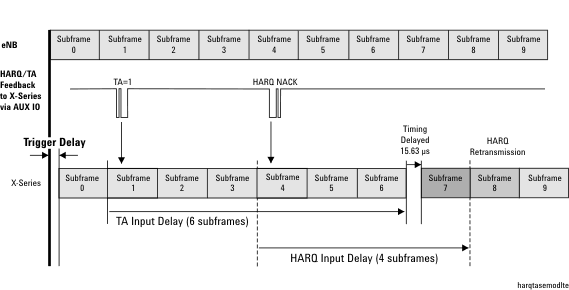
Timing advance (TA) is the command from eNB to UE to adjust frame timing. When multiple UEs transmit simultaneously, there is a delay time for the signals to reach the eNB and this causes timing delay. LTE and OFDM have a mechanism to absorb symbol timing delay with slower symbol rate and cyclic prefix. However, if the amount of delay becomes too large, the eNB can send a TA command to the UE so that the eNB can control arrival timing within a manageable level.
The TA command can move UE frame timing forward or backward from -16.145 us to 16.670 us with 6 bits command. UE is expected to adjust frame timing 6 subframes after receipt of TA command from eNB.
|
TA |
0 |
1 |
2 |
... |
30 |
31 |
32 |
... |
61 |
62 |
63 |
|
NTA |
-496 |
-480 |
-464 |
... |
-16 |
0 |
16 |
... |
480 |
496 |
512 |
|
Advance Time (ms) |
|
|
|
... |
-520.83 |
0 |
520.83 |
... |
15,624 |
16,145 |
16,670 |
X-Series supports this timing adjustment with TA feedback in dedicated mode. The TA command can be sent over AUX IO in 10 bits long RS-232C protocol format with no parity. The HARQ command can also be sent over the same line. The figure below illustrates TA and HARQ commands being sent. In dedicated mode, X-Series responds to the TA and HARQ inputs after specified amount of delay (in subframe). As shown in the figure, TA delay is 6 subframes and HARQ delay is 4 subframes by default.
